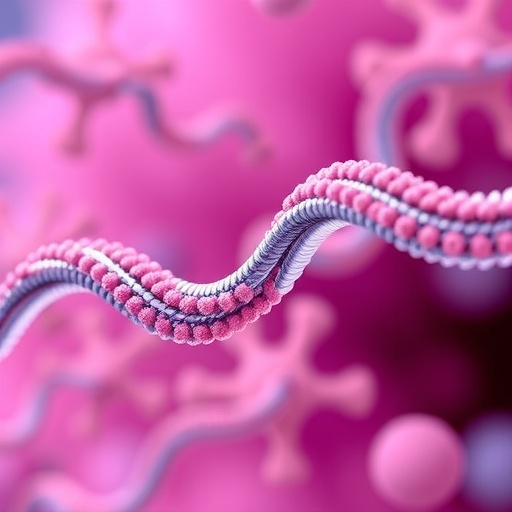In the ever-evolving realm of therapeutic development, humanization of monoclonal antibodies and nanobodies is an essential step that significantly enhances their clinical applicability. The process aims to modify these proteins derived from non-human species to resemble their human counterparts more closely, thereby improving their efficacy and safety profiles. Recent advancements have illuminated this path, with the introduction of novel computational approaches that leverage artificial intelligence to streamline the humanization process. Among these advancements is HuDiff, a cutting-edge adaptive diffusion model that has shown promising results in transforming both antibodies and nanobodies from their murine and alpaca forms into fully humanized entities.
HuDiff represents a revolutionary approach, drawing inspiration from the successes of diffusion models, which have gained traction across various fields in machine learning. This adaptive framework utilizes complementarity-determining region sequences as its sole starting point for humanization, eschewing the reliance on pre-existing humanized templates. This innovative strategy is not only groundbreaking but also remarkably efficient, laying the groundwork for a new standard in the design of actively humanized antibodies and nanobodies.
One of the critical benchmarks for any therapeutic antibody is its ability to maintain or even improve its binding affinity upon humanization. HuDiff-Ab, the antibody variant of this model, has demonstrated an ability to generate humanized sequences that are strikingly similar to experimentally validated humanized antibodies. The key to this achievement lies in the deep learning algorithms employed within HuDiff, which can smartly navigate the complex landscape of amino acid substitution, ensuring that the resulting humanized antibodies retain their functional characteristics.
Similarly, HuDiff-Nb, the nanobody variant, has surpassed expectations by yielding sequences with both higher humanness scores and greater native characteristics when compared to traditional methods. The importance of these metrics cannot be overstated, as they play a crucial role in determining how the human immune system will recognize and respond to these molecules. By effectively quantifying humanness and nativeness, HuDiff allows for a nuanced understanding of the biological implications of its design choices.
The application of HuDiff is most notably illustrated through its use in humanizing a murine antibody targeting the SARS-CoV-2 receptor-binding domain. This particular antibody has been pivotal during the pandemic, serving as a foundation for therapeutic interventions against the virus. Through the humanization process, HuDiff has preserved the binding affinity of the original murine antibody at a comparable level of 0.15 nM instead of the parental antibody’s 0.12 nM, demonstrating its efficacy in ensuring that the humanized variant retains its essential biological activity.
Apart from HuDiff’s work with antibodies, its application extends to the creation of humanized nanobodies as well. Two distinct alpaca-derived nanobodies were humanized—one targeting the receptor-binding domain and the other focused on the C345c domain of the complement protein C3. Such innovations are crucial in developing targeted therapies, providing options that can effectively neutralize pathogens or pathogenic mechanisms. The enhanced binding affinity of the best-performing nanobody, exhibiting a marked improvement to 2.52 nM from the parental nanobody’s 5.47 nM, underlines the model’s ability to not only preserve function but also enhance performance.
Neutralization assays further validated the success of HuDiff in practical applications. The results confirmed that humanized sequences effectively neutralize SARS-CoV-2, indicating a promising avenue for future therapeutic development. This application not only highlights the capabilities of HuDiff in addressing immediate clinical needs but also sets a precedent for its usage in other infectious diseases and therapeutic contexts.
The profound implications of HuDiff’s enhanced humanization process resonate within the scientific community. The model’s success, illustrated through compelling metrics of performance, suggests that AI and machine learning can usher in a new era of drug development, where speed, efficiency, and precision take precedence. HuDiff stands as a beacon for future innovations, opening the doors to rapid humanization of not just antibodies and nanobodies but potentially servicing a wide array of biologics.
Moreover, these advancements are timely, as the ongoing pandemic has magnified the urgent need for effective therapeutics that can be quickly adapted and produced. The methodological evolution brought forth by HuDiff demonstrates the critical intersection between technology and fundamental biology. This synergy is increasingly essential as researchers look to navigate the complexities of immunologic design and response.
In summary, HuDiff exemplifies a significant leap forward in the humanization of antibodies and nanobodies, addressing both efficiency and specificity. The ability to generate human-like sequences from scratch through an adaptive diffusion framework represents not just a technical achievement but a paradigm shift in how therapeutic proteins can be developed. With the potential to impact various fields beyond infectious disease, HuDiff sets a promising trajectory for the future of biopharmaceutical innovation.
By enhancing the humanization process while retaining crucial binding properties, HuDiff establishes that the application of artificial intelligence in biotechnology is not merely aspirational but indeed actionable. As the scientific community continues to explore this frontier, the influence of models like HuDiff will play a pivotal role in shaping the future of therapeutic development and the broader field of immunology.
Subject of Research: Humanization of antibodies and nanobodies using adaptive diffusion models.
Article Title: An adaptive autoregressive diffusion approach to design active humanized antibodies and nanobodies.
Article References:
Ma, J., Wu, F., Xu, T. et al. An adaptive autoregressive diffusion approach to design active humanized antibodies and nanobodies.
Nat Mach Intell (2025). https://doi.org/10.1038/s42256-025-01120-9
Image Credits: AI Generated
DOI:
Keywords: humanization, antibodies, nanobodies, deep learning, diffusion models, SARS-CoV-2, bioengineering, therapeutic development.




